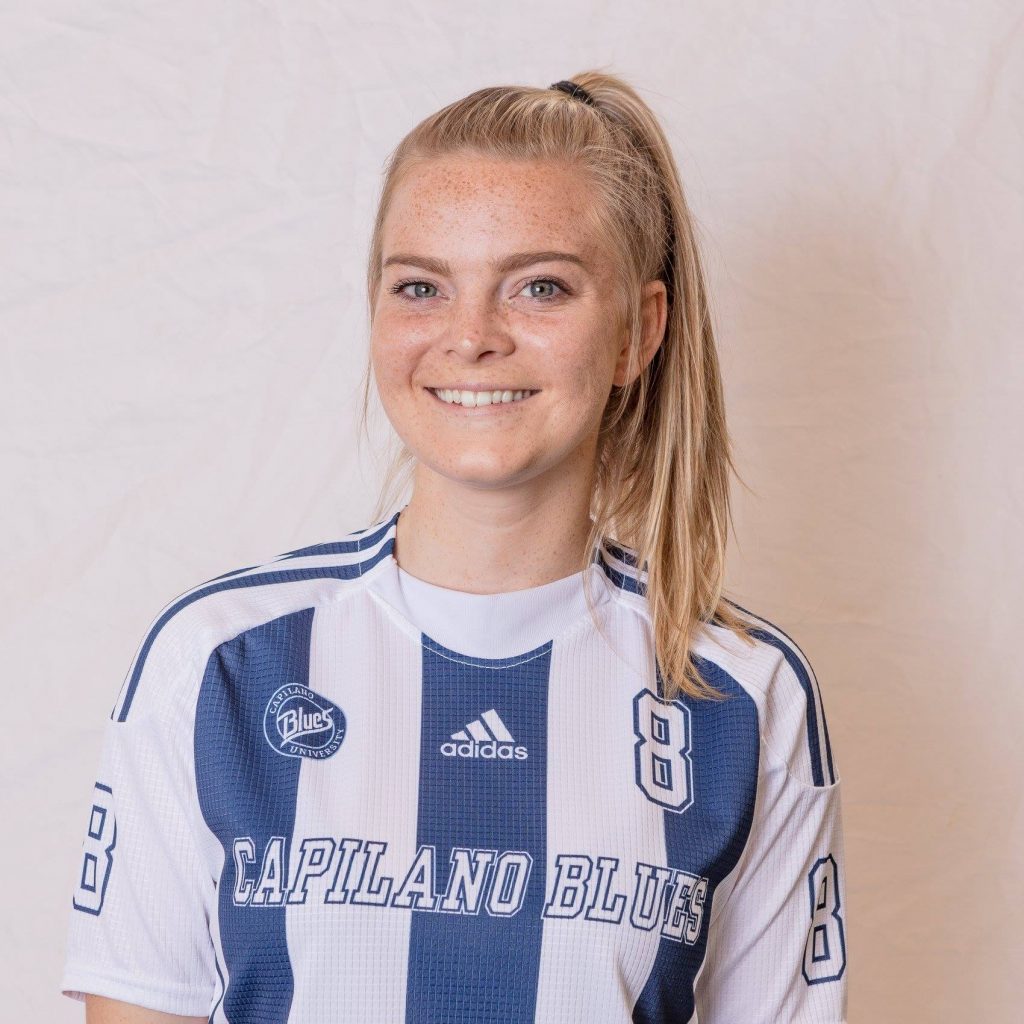
Jessica Price
Jessica Price is completing a Bachelor of Arts degree in psychology at Capilano University, with a background in educational counselling. Jessica was rewarded a soccer scholarship and played on the Women’s soccer team at Capilano for 5 years. Jessica is planning to attend the Professional Development Program for teaching next year to continue her path towards becoming an educational counsellor.
School counsellors in the British Columbia public school system have a ratio of 1 counsellor for every 693 students (B.C Public School Employers Association Provincial Collective Agreement, 2019). Meanwhile the COVID-19 global pandemic has caused a drastic rise in mental health issues occurring amongst school-aged children. In B.C alone the provincial government budgeted $74 million to enhance access to mental health services specifically for children and young adults (Moroz, Moroz, D’Angelo, 2020). In addition to providing mental health services counsellors are responsible for providing academic guidance to students, resulting in massive paperwork.
So, did you know your counsellor in school? There was only one counsellor throughout my 13 years in the public-school system that made an impact on my life. This is despite being ostracized from my peers. When I needed someone, there was not a counsellor readily available to meet my social-emotional needs. Has the situation improved? Or are many students needing to speak to a trusted adult cast aside as an unessential need. My personal experience has motivated me to pursue a career as an educational counsellor. My goal is to make a difference for students who feel like they have nowhere else to go. However, this problem is not simply solved by a few individuals. Action must be taken to decrease the burnout resulting from stress, anxiety, and the overworking of teachers and students. The Ministry of Education needs to reimagine and redefine the role of a school counsellor to avoid workout burnout. This should be done by intentionally dividing the job into two roles, Academic Guidance Counsellor, and Mental Health Specialist. The Academic Guidance Counsellor would be solely responsible for supporting students with academic needs. The Mental Health Specialist would focus on helping address pressing mental health problems and helping facilitate social-emotional learning. Furthermore, the Ministry of Education should insert a specialized school social worker who can help connect students with available resources in the community.
This article will investigate and analyze the background of school counsellors, specifically their role in the school, and the qualifications necessary to become a certified counselor. I interviewed my previous high school counsellor with over 30 years prior experience in the school system about how the system has changed over time and what possible solutions he would like to see implemented. Extensive research into The Ministry of Education, The British Columbia Teacher Federation (BCTF), The British Columbia School Counsellors’ Association (BCSCA) has shown how the pandemic has influenced the provincial and federal government to increase funding towards mental health services. Despite the increased funding, the problem of not having enough trained counsellors persists. If we are to truly remedy this issue, there needs to be an increase in the number of school counselors or else our youth will continue to face these challenges alone. Providing more trained counsellors for students is a vital part of meeting all students needs in the public school system.
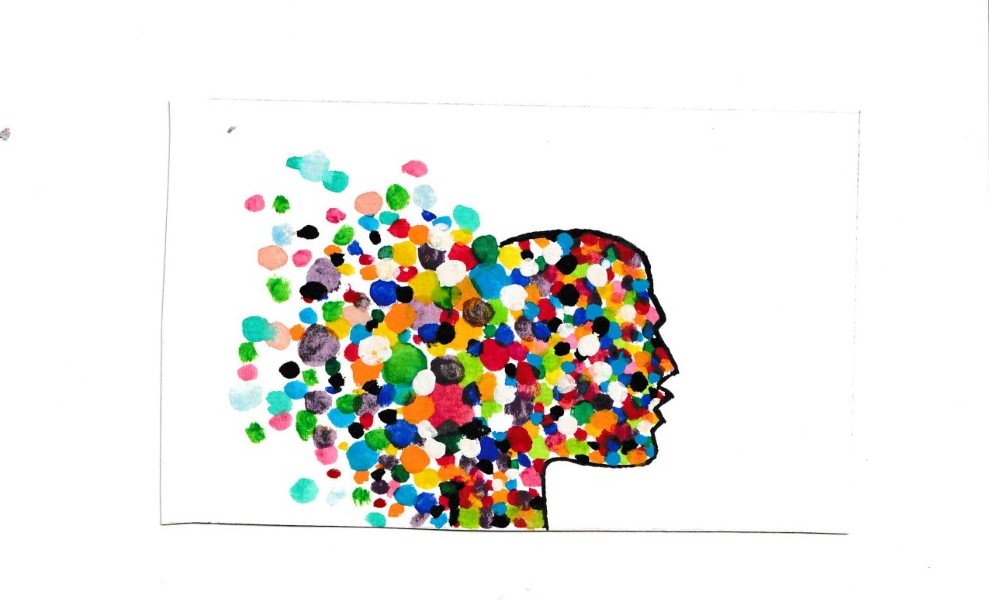
School counsellors are asked to provide multiple services for students ranging from career/ academic guidance and assessments, mental health counselling and disciplinary oversights. Work B.C. (2022) states that counsellors should perform some of these following duties:
-Help students with educational issues on course and program selections.
-Counsel students regarding personal and social issues including depression or substance abuse.
-They may have to teach regular classes.
-Counsel students in crisis situations which may consist of a family death.
If this is what an educational counsellor must do, there is a part of me that feels overwhelmed and makes me questions heading into this profession. Becoming a teacher had never appealed to me before I learned it was required to become an educational counsellor. Until this point, I had not considered teaching in a classroom and found the idea unsettling at first. I can only wonder if this is part of the reason why there is a limited number of counsellors in the school system. The overlapping responsibilities are confusing and there is ambiguity as to whether certain tasks fall under the jurisdiction of the teacher, counsellor, or administrator (Keats & Laitsch, 2010). Rich Chambers, a school counsellor of over 30 years is noticing that, “Most schools shut down their counselling office at specific times or students must make an appointment.” This is because counsellors have an overwhelming amount of paperwork on top of worrying about the well-being of students. Chambers states, “In my opinion, too many high school counselors shut the door and meet with one student three times a week, and the job is not designed that way.” There is a mix of teaching obligations that interfere with counselling roles and vice versa. In B.C every school district individually determines the role of a school counsellor which is a main source of confusion. Counsellors also often play a role in executing their Schools Action Plan for Learning, causing responsibilities to differ from site to site. The amount of work school counsellors have to complete on a daily basis requires there to be more support and trained counsellors in B. Cs public school system.
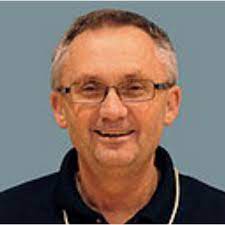
Throughout our conversation, Chambers provided insight into the life of a school counsellor. For high school counsellors there is an expectation that grad checks are completed for every student. Additionally, students planning on attending post-secondary institutions require support ensuring they have achieved the necessary qualifications. Therefore, out of necessity high school counsellors in the latter half of the school year spend more of their time focusing on academic counselling than guidance counselling. Chambers says, “I’m checking to make sure that students have met all graduation requirements. I’m meeting with kids every single day about what courses they should choose for next year. That’s a big part of a high school counselors’ job.” The role a school counsellor plays changes depending on the structure of the school, there are counsellors who focus primarily on academic guidance for post-secondary education and other counsellors who focus on social and emotional support for students. (Hanna, 2019). There was this unspoken notion that counsellors in high school are there for educational needs instead of emotional support. I never went to a counsellor for emotional support, it was always to update my timetable. Looking back, I could have benefited from speaking to a counsellor at certain times in my life. Chambers also noticed a shift in how counsellors are focusing on their roles in the school:
“It’s really changed when I first started. It was almost exclusively career counseling, and then the schools got career counselors. There’s just been so many mental health issues over the last 10 years that a large portion of our job now its dealing with that.”
One study finds that counsellors are not putting enough emphasis on career counselling and instead focusing more on emotional and social support. Counsellors are frontline support for students and when there is a crisis such as the global COVID-19 pandemic, their priorities shift towards supporting social-emotional needs (Collie, 2019). This raises the question, what is the correct balance for counsellors to strike between academic guidance and social emotional support in a school.
To what degree should counsellors possess the autonomy to decide what they prioritize? Maybe the issue is the ambiguity in the role of what it means to be a school counsellor. I am proposing that school districts need to have two separate groups of counsellors one for academic purposes and one to provide social emotional support and respond to growing mental health concerns in society. Students and counsellors need a clear definition of what a school counsellors’ role is and for these expectations to be upheld by all school districts in the province.
In B.C school counselling is an unregulated profession allowing each school district to handle the framework for school counsellors in various ways. There has been a push to have school counsellors regulated within the government with support from the British Columbia Teacher Federation (BCTF) and the British Columbia School Counsellors’ Association (BCSCA). Since there is no formal regulation the Ministry of Education in B.C provides a set of standards to become a school counsellor. This outlines the various organizations that have multiple standards for school counsellors but do not have an accredited body of governing (Keats & Laitsch, 2010). For instance, in B.C for an individual to become a school counsellor they need to have a professional teaching certificate and a master’s degree recognized by the Ministry with a focus on counselling (British Columbia Ministry of Education, 2016).
B.C could mirror the New Brunswick system in which they have outlined two areas where individuals can become a guidance counsellor. First, if an individual wants to become a guidance counsellor they will need to obtain a master’s degree with 10 graduate level courses (Canadian Counselling and Psychotherapy Association, 2012). If an individual wants to become a guidance teacher they will need to complete 15 credits from the following list of approved university counselling courses at the graduate or 5000 Undergraduate Level (Canadian Counselling and Psychotherapy Association, 2012). This system allows individuals to complete these requirements while going through post-secondary education which will entice people who want to head into this profession more than B. Cs current requirements. Not only will is allow for a more cost-effective approach for individuals but it will also increase the likelihood of more trained counsellors that can provide support in schools.
One of the issues facing school districts is the lack of funding they receive from the Ministry of Education. Schools are receiving fewer resources each year despite the needs of students increasing. These financial shortcomings have only gotten worse due to the government spending during the global pandemic. The pandemic has also created a spike in mental health problems amongst school children who are more anxious than ever. To amplify the problem further many teachers who want to go into educational counselling are deterred due to financial reasons. Many cannot afford to take the time away from work to pay for a master’s degree as most master’s degrees in Educational Counselling can cost between $20,000.00 to $40,000.00 Canadian (University of British Columbia, 2022). This does not take into consideration that beginning teachers start out making $50,000.00 per year (British Columbia Teacher Federation, 2022). The benefit to obtaining a master’s degree for teachers is that their pay increases by $5,000.00 annually which is a significant increase.
Financing and completing a 2–3-year master’s degree when you have a mortgage and family to support is difficult for most families within incurring additional debt. Why is this such an issue? The economic burden on trying to obtain a master’s degree in counselling scares teachers away from wanting to pursue their Master’s in Counselling. Furthermore, Educational Counselling Programs require clinical hours that must be completed in a school setting with a supervisor to be certified. Many teachers must take an educational unpaid leave to satisfy that requirement. Talking to a new teacher of 3 years Liam Arthur who is currently completing his Master’s in Educational Counselling, he states that, “To get an educational leave the school districts are the ones to approve the time off for the teacher.” The basis for an educational leave in certain school districts indicates that an individual must be teaching for 5 years. Part of the issue is that teachers simply do not want to burden themselves financially to become a registered school counsellor. This is an area of concern because there is already a shortage of educational counsellors currently and this problem will persist in the future. It is critical that cost-effective pathways to becoming a school counsellor are developed. Incentives do occur through a pay increase, but it is very minuscule compared to the amount one initially spends to become certified. A way to incentivize teachers to train as an educational counsellor is to provide a greater number of paid leaves towards specific programs. Financial and funding issues will always occur but when it is contributing to a labour shortage the problem that needs to be addressed.
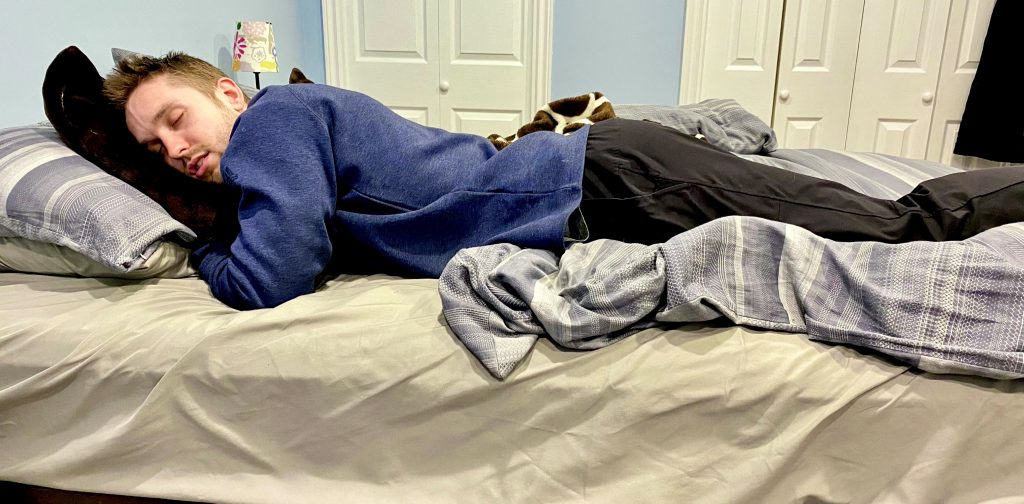
The economic impact from COVID-19 is evident especially through the lens of health care services. On average in Canada individuals spend $950 million annually on private practice psychotherapists for mental illness, and 30% pay out of pocket for these services (Moroz, Moroz, D’Angelo, 2020). Families who once could afford therapy for themselves or their child are now struggling to pay for that same service, which is not always covered by extended medical benefits. For instance, coverage typically ranges from only $400 to $1,500 annually, covering only 2-8 therapy sessions (Moroz, Moroz, D’Angelo, 2020). Why does this matter? Low- income households cannot afford to see therapists as the cost is astronomical, so instead children from those families would visit a school counsellor. This is now a challenge as individuals who are struggling to pay to see a mental health therapist outside of school are also struggling to see a school counsellor. In 2017 for mental health care 12,000 children had to wait 2.5 years in Ontario to visit a counsellor (Moroz, Moroz, D’Angelo, 2020). The wait times in 2017 were long for adolescents who are one of the most vulnerable populations as they are not able to access services on their own (Keats & Laitsch, 2010). Now couple that with a global pandemic one can only imagine how long it will be before they see a counsellor. COVID-19 has put a strain on the mental health system in B.C causing it to trickle into the public school system.
A global pandemic has increased the amount of mental health issues adolescents are facing. An agreement between the B.C Public School Employers Association (BCSPEA) and the British Columbia Teachers Federation (BCTF) indicates that there should be a minimum ratio of 1 counsellor to 693 students (B.C Public School Employers Association Provincial Collective Agreement, 2019). This not only makes counsellors jobs strenuous due to the large number of students they are responsible for, but it also creates obstacles for students (Keats & Laitsch, 2010). Chambers notes, “Last year we were allocated 2.97 counsellors for 1350 students” which is absurd when counsellors are not only visiting with students but teaching students as well. In comparison counsellors outside of the school system on average see 5-6 clients a day for 45-60 minutes (Esquer, 2021). While counsellors are often dealing with more challenging mental health issues from their clients it does not compare to the client load that school counsellors have. When there is a massive caseload as there is now for school counsellors, there is no telling how many students will fall through the cracks of the public schools crumbling system.
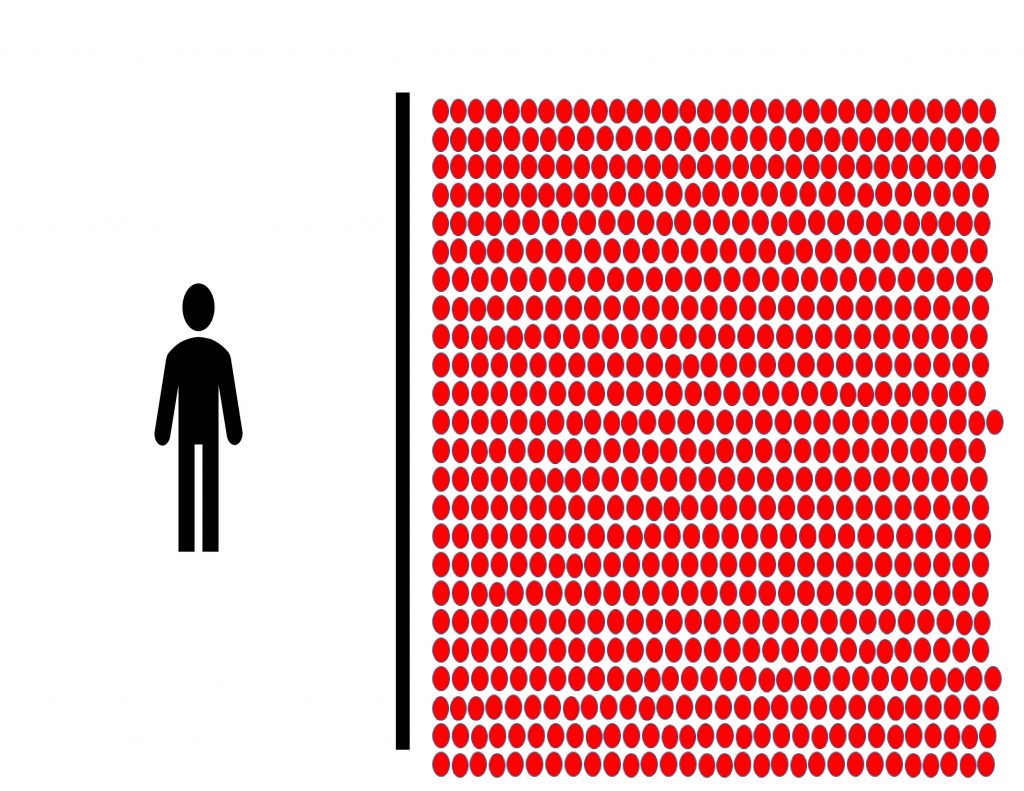
The ratio of one counsellor who is responsible for 693 students.
To change this crumbling system there needs to be an emphasis on providing the right resources school counsellors can use. Providing a social worker that is based in the school system would provide access to community resources for students, teachers, and counsellors. For instance, Chambers notes when a social worker was present at his school he felt better supported in his job. He states, “It was absolutely the best thing because that social worker could get us access to services. Especially for people that we can’t get access to.” Social workers have an enormous caseload to work with especially with the pandemic complicating their workload. The Ministry of Education should look at having 2 social workers for one district that only work in the school system. The benefit to having a constant presence of a school social worker is that they can improve students’ emotional well-being and academic performance (National Association of Social Workers, 2010). Chambers indicates the benefit he noticed from a social worker in the school, “If we needed to get someone into specialty programs, [they] knew a person that could get the student on the waiting list right away which gave the parents hope.” While this doesn’t negate the problem entirely having an outside resource takes the onus off of the counsellor to solve all matters internally.
There still is the looming issue of a limited number of counsellors in the school system to begin with. The Ministry of Education and the B.C school districts must come to an agreement on the roles and regulations a school counsellor should perform. Since there is no regulation on counsellors in B.C it is up to the school district to hire counsellors which can be based on practicum experience or a master’s degree (Keats & Laitsch, 2010). The role of school counsellor is ambiguous and currently they are being asked to be teachers, therapists, and assessment specialists (Keats & Laitsch, 2010). To change the school system, ideas on roles and responsibilities for educational counsellors needs to be consistent. There should be 2 specific groupings of counsellors in the school system, academic and emotional support. With having 2 specific groups of counsellors this can divide the roles so that one counsellor is not doing both roles, which is occurring right now. The academic group of counselors can focus on helping students with educational issues such as program selections, career exploration, resumé preparation, and job interview skills (Work B.C, 2022). This group of counselors can also focus on disciplinary issues and supporting teachers in their role. Mental health counsellors can focus on personal and social issues which can include stress, anxiety, substance abuse, depression, eating disorders, and family issues (Work B.C., 2022). Providing a clear delineation of roles by splitting the current duties of an educational counsellor will lead to less confusion for students and greater access and expertise.
Recomposing the role of a school counsellor could also be a cost-effective strategy. When the role of a school counsellor is differentiated into 2 categories of academic and mental health counselling, school districts would not have to spend more money on counsellors’ salaries. Furthermore, by having counsellors focus on one area they are less likely to become unwell physically and emotionally which will lead to less paid sick leave. Teachers who want to provide academic guidance counselling can obtain a masters with a different focus and would not be required to meet the threshold of clinical hours to be considered a mental health professional. Teachers who want to become a mental health counsellor can follow the current path by obtaining a master’s in educational counselling. This solution can provide a better structure for the school systems and help distinguish between school counsellors’ roles and responsibilities. This is not only a cost-effective option but can lessen the burden one counsellor feels towards occupying all of these roles in one job. Going into this profession knowing that there is a cost-effective and alleviating option would allow me to focus more on my student’s mental health than on the amount of paperwork I need to complete. By splitting the role into two different jobs students will have a better understanding from all participants on who to look for in a crisis and who to find for an educational purpose.
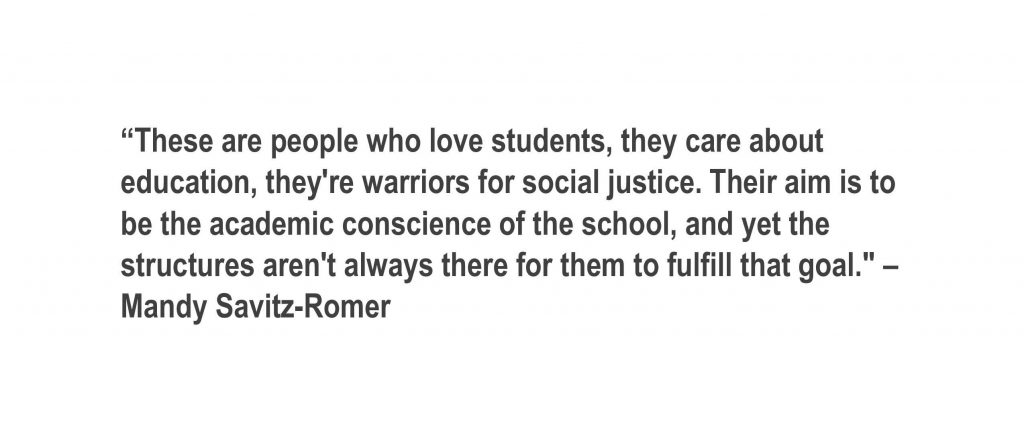
“Instead of moving in the right direction, I think they’re moving in the wrong direction,” stated Chambers who is noticing first-hand the impact that COVID-19 has had on the public school system. Mental health services in the community are backlogged and vulnerable individuals are experiencing long waitlists. These services are not accessible for families or individuals who do not have the financial means or extended health benefits. This is causing the public school system to deal with difficult issues that school counsellors are not equipped to handle and lack the time and community resources necessary to address them properly. If there is no immediate action taken to provide definite solutions for school counsellors, there will be a high rate of burnout and empty counselling positions that cannot be filled. By implementing two separate positions within school counselling departments at schools the issue of burnout and expertise is being addressed in a cost-effective way. This is the best option for everyone involved, especially school counsellors. We can then start to build the mental health care system in schools that we want our children to have in the future.
Works Cited
B.C. Public School Employers Association Provincial Collective Agreement. (2019). Provincial Collective Agreement. PROVINCIAL COLLECTIVE AGREEMENT (bcpsea.bc.ca)
British Columbia Ministry of Education. (2016). Special Education Services: A Manual of Policies, Procedures and Guidelines. British Columbia Ministry of Education. Special Education Policy Manual (gov.bc.ca)
British Columbia Teachers Federation. (2021). Teachers Salary Grid- School District No. 43. British Columbia Teachers Federation. 43-SL-Salary Grid 2019-2022 revised as of Mar 30, 2020.xlsx (bctf.ca)
Canadian Counselling and Psychotherapy Association (2012). Regulation for School Counsellors by Province. Canadian Counselling and Psychotherapy Association. RegulationSchoolCounsellors_en.pdf (ccpa-accp.ca)
Collie.M. (2019). Canadian School Counsellors are Stretched Thin- Its our Students That Suffer. Global News. Canadian school counsellors are stretched thin — and it’s our students that suffer – National | Globalnews.ca
Educational Counsellors (2022). Work B.C. Educational counsellors (workbc.ca)
Esquer. K. (2021). The Average Caseload for a Mental Health Therapist – How Much is Enough? Teletherapist Network. The Average Caseload for A Mental Health Therapist → How Many Clients Per Week For A Therapist — Teletherapist Network
Hanna. J. (2019). Outnumbered. Harvard Graduate School of Education. Reimagining the Role of School Counselors | Harvard Graduate School of Education
Keats. A., P. & Laitsch. D. (2010). Contemplating Regulation of Counsellors in Canadian Schools: Current Issues and Concerns. Canadian Journal of Educational Administration and Policy, 108, 1-33.
Moroz. N., Moroz. I., & D’Angelo. S. M. (2020). Mental Health Services in Canada: Barriers and Cost-Effective Solutions to Increase Access. Healthcare Management Forum, 33(6), 282-287.
National Association of Social Workers. (2010). Social Workers in Schools: Kindergarten through 12th Grade. NASW Center for Workforce Studies and Social Work Practice. Layout 1 (socialworkers.org)
Samji. H., Dove. N., Ames. M., Barbic. S., Sones. M., & Leadbeater. D. (2021). Impacts of the COVID-19 Pandemic on the Health and Well-Being of Young Adults in British Columbia. British Columbia Centre for Disease Control. BCCDC_COVID-19_Young_Adult_Health_Well-being_Report.pdf
The University of British Columbia (2022). Master of Education in Counselling Psychology (MED). University of British Columbia. Counselling Psychology – Master of Education – Postgraduate / Graduate Degree Program – UBC Grad School
